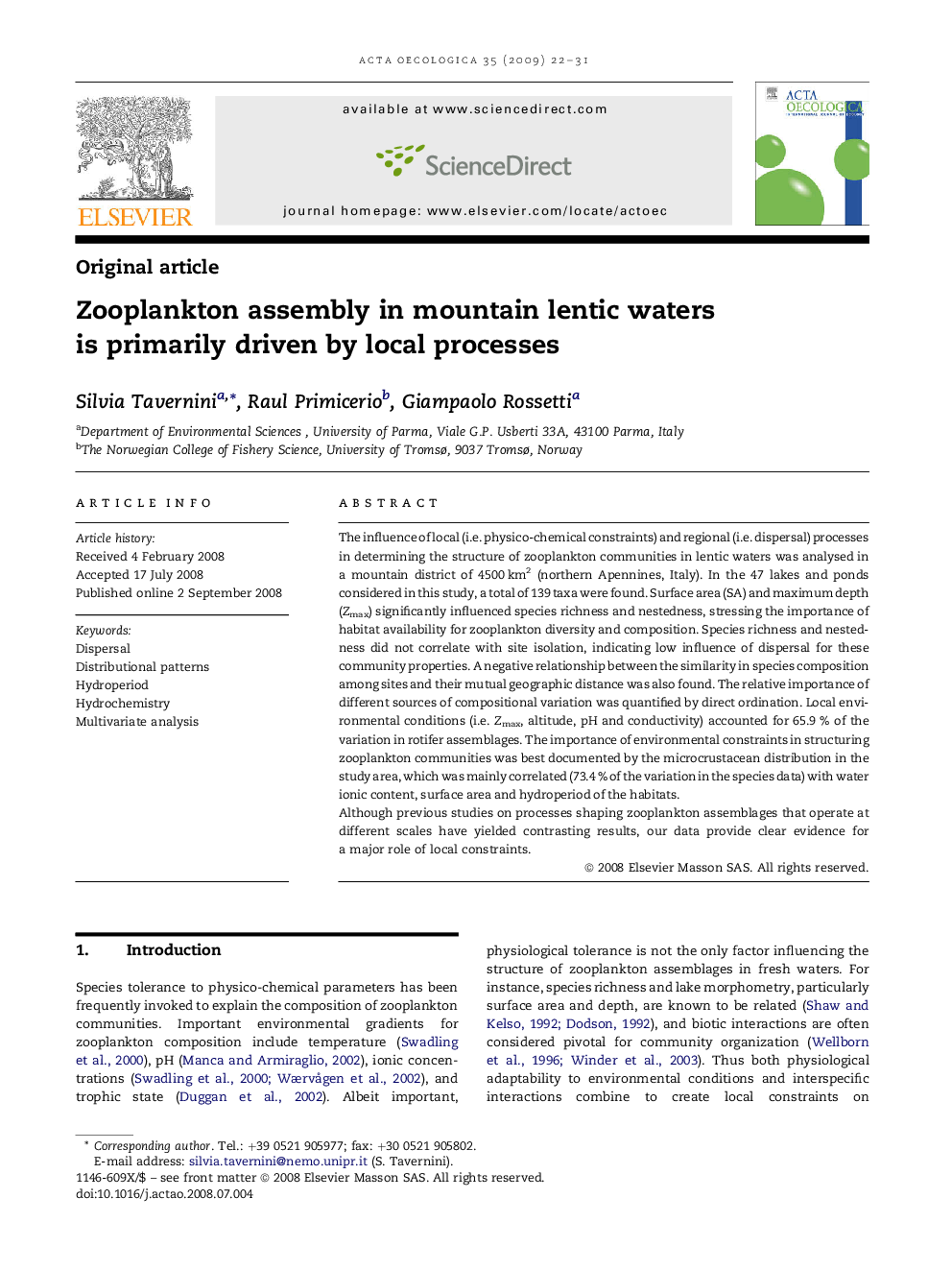| Article ID | Journal | Published Year | Pages | File Type |
|---|---|---|---|---|
| 4381384 | Acta Oecologica | 2009 | 10 Pages |
The influence of local (i.e. physico-chemical constraints) and regional (i.e. dispersal) processes in determining the structure of zooplankton communities in lentic waters was analysed in a mountain district of 4500 km2 (northern Apennines, Italy). In the 47 lakes and ponds considered in this study, a total of 139 taxa were found. Surface area (SA) and maximum depth (Zmax) significantly influenced species richness and nestedness, stressing the importance of habitat availability for zooplankton diversity and composition. Species richness and nestedness did not correlate with site isolation, indicating low influence of dispersal for these community properties. A negative relationship between the similarity in species composition among sites and their mutual geographic distance was also found. The relative importance of different sources of compositional variation was quantified by direct ordination. Local environmental conditions (i.e. Zmax, altitude, pH and conductivity) accounted for 65.9 % of the variation in rotifer assemblages. The importance of environmental constraints in structuring zooplankton communities was best documented by the microcrustacean distribution in the study area, which was mainly correlated (73.4 % of the variation in the species data) with water ionic content, surface area and hydroperiod of the habitats.Although previous studies on processes shaping zooplankton assemblages that operate at different scales have yielded contrasting results, our data provide clear evidence for a major role of local constraints.
